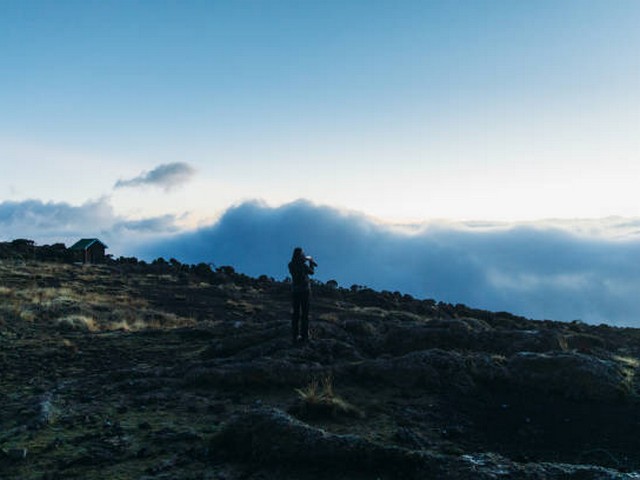Trekking Kilimanjaro While Learning About Wildlife Conservation
At the heart of Tanzania, the majestic Mount Kilimanjaro rises above the savannah, offering more than just a trekking experience. It stands as a beacon for adventurers and wildlife enthusiasts alike. Here at Kilimanjaro Centre for Trekking and Ecotourism (KCTE), we believe that climbing Kilimanjaro can be a transformative journey that combines the thrill of adventure with the profound insights of wildlife conservation. Join us as we explore how trekking Kilimanjaro can be a pathway to understanding and contributing to the conservation efforts that are vital to preserving Africa’s natural heritage.
Why Combine Trekking and Wildlife Conservation?
Trekking Mount Kilimanjaro is an unforgettable adventure, but when combined with learning about wildlife conservation, it becomes a multifaceted experience that enriches your understanding of the natural world. The unique ecosystems you traverse and the wildlife you encounter along the way are all part of a delicate balance, where each element plays a crucial role in the health of the environment. By integrating conservation education into your climb, you not only gain knowledge but also develop a deeper connection to the landscape and its inhabitants.
The Journey Up Kilimanjaro: A Conservation Perspective
The Rainforest Zone
Your trek begins in the lush montane forests that cloak Kilimanjaro’s lower slopes. This dense greenery is teeming with life, from chattering monkeys to vividly colored birds. As you ascend, our knowledgeable guides share insights about the forest ecology and the conservation challenges it faces, such as deforestation and climate change. It’s here that you’ll understand the importance of conservation efforts that ensure these forests continue to thrive.
The Heath and Moorland
As you climb higher, the dense forest gives way to the open heath and moorland. This zone offers a different but no less important biodiversity. The giant lobelias and senecios are not just beautiful—they’re specially adapted to the mountain’s harsh conditions. During this stage, our guides will discuss the delicate balance of this ecosystem and the impacts of human activity on these resilient species.
The Alpine Desert and Summit
Nearing the summit, the environment shifts again into an alpine desert. Sparse vegetation and rugged terrain dominate this area, creating a stark contrast to the lush forests below. Here, conservation education focuses on the survival adaptations of the flora and fauna, emphasizing the impact of global warming on Kilimanjaro’s glaciers. Witnessing the retreating glaciers firsthand offers a powerful testament to the urgency of environmental stewardship.
Engaging in Conservation Efforts
Participatory Activities
KCTE offers hands-on conservation activities designed to give you an active role in preservation efforts. Whether it’s participating in tree planting initiatives, engaging with local conservation projects, or attending talks with wildlife experts, you have the opportunity to contribute directly to the sustainability of the Kilimanjaro region.
Learning from Researchers and Local Communities
Interaction with wildlife researchers and local communities enriches your trekking experience. These interactions provide insights into the practical aspects of conservation work and the challenges faced by those living at the foot of Kilimanjaro. Understanding their perspectives and solutions promotes a deeper appreciation of the complexities involved in wildlife conservation.
Why Choose KCTE for Your Kilimanjaro Adventure?
At KCTE, we are committed to providing a trekking experience that is both exhilarating and educational. Our expert guides are trained not only in safety and trekking protocols but also in environmental conservation. We strive to ensure that every trekker leaves with greater awareness and a renewed commitment to preserving our planet’s natural wonders.
FAQs: Trekking Kilimanjaro and Wildlife Conservation
How physically prepared do I need to be to climb Kilimanjaro?
Climbing Kilimanjaro is a strenuous activity that requires physical fitness. We recommend starting a training program at least 3 months before your climb.
What is the best time of year to trek Kilimanjaro?
The best times to climb Kilimanjaro are during the dry seasons, from January to mid-March and from June to October.
Can I engage in conservation activities without any prior experience?
Absolutely! KCTE designs conservation activities for all levels of experience. Our experts will guide you through each activity, ensuring you learn and contribute effectively.
What should I bring for the trek?
Essential items include sturdy hiking boots, warm clothing, rain gear, sunscreen, a water bottle, and personal medications. KCTE will provide a detailed packing list upon booking.
How does KCTE support wildlife conservation?
KCTE collaborates with local conservation organizations and dedicates a portion of trekking fees to conservation initiatives. By trekking with us, you support these vital programs.
Conclusion: Join Us on a Journey of Discovery and Preservation
Trekking Kilimanjaro is more than just an adventure; it’s a chance to connect with nature and contribute to its preservation. At Kilimanjaro Centre for Trekking and Ecotourism, we are passionate about creating experiences that inspire and educate. Book your trek with KCTE and take the first step on a journey that promises not only to challenge you physically but also to enrich your understanding of the natural world and your role in its future. Let’s climb for conservation, for education, and for the sheer joy of discovering the roof of Africa!
Whether you are a seasoned trekker or a curious newbie, eager to learn about environmental conservation or looking for a unique way to experience one of the world’s most iconic mountains, KCTE is here to guide you every step of the way. Join us on this incredible journey—where every step counts towards a greater understanding and a healthier planet.




